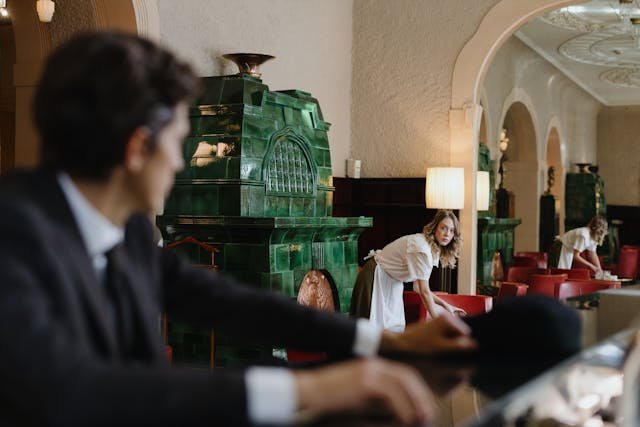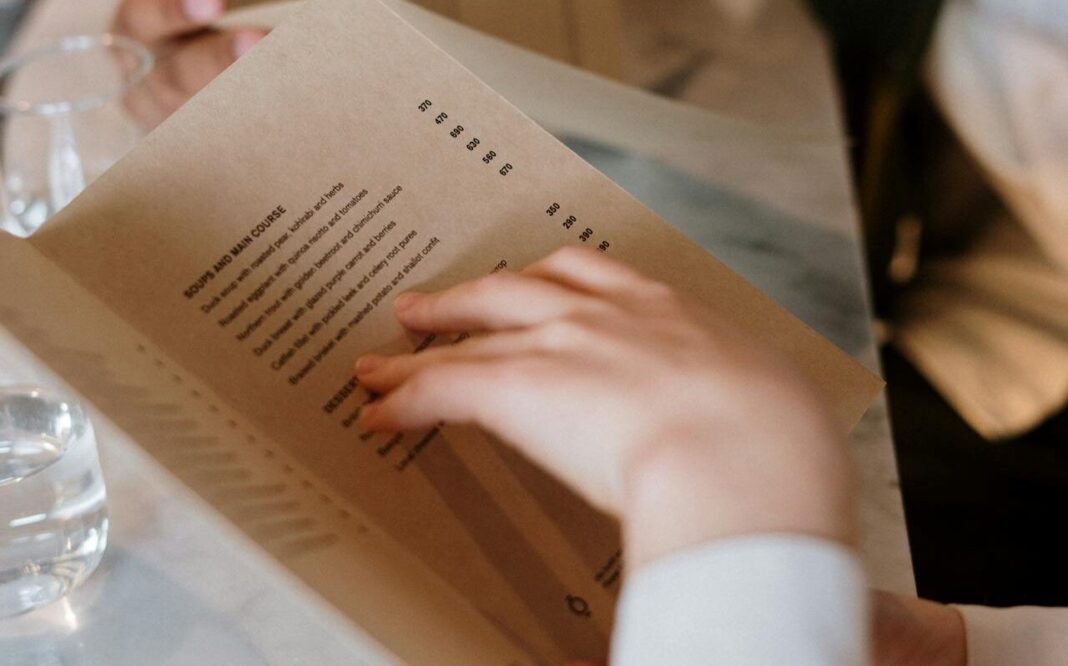The Art of Guest Reading
Managing a successful restaurant is not just about having great food. It’s also about giving your guests a great positive experience. In the hospitality industry, one of the biggest parts of that experience is, of course, your service staff. You can have the tastiest food in town, but if the service is bad, people probably won’t come back. That’s why it’s so important to train your staff properly—not just to take orders or carry plates but to read guests as well.
Reading guests means understanding what they need, how they feel, and when they need something without them even asking. It’s like having a sixth sense. In this post, we will break down the art of guest reading and explain why it’s so important to train your staff in three key areas: timing, tone, and tact.
Why Guest Reading Matters

We all have been dining in bars and restaurants, right? Think of the best restaurant experience you’ve had. Chances are, the server made you feel comfortable, welcomed, and taken care of. Now, think of the worst one. Maybe the server was too pushy, too slow, or not friendly at all. That’s what guest reading helps prevent.
When you train your staff to read the room, they can adjust their approach depending on who they’re dealing with. A couple on a date wants a different vibe than a table of coworkers on a lunch break. A group celebrating a birthday doesn’t want the same service as someone eating alone with a laptop. One-size-fits-all doesn’t work in hospitality.
Let’s dive into the three big things your servers need to master:
- Timing: It’s All About When
Timing is everything in service. Let’s say you’re hungry, and you’ve just sat down at a restaurant. If it takes forever for someone to greet you or bring water, you already feel ignored. On the other hand, if a server interrupts you every two minutes, it’s annoying. This is where you really need to train your staff. Teach them to recognize when to check in and when to give space. For example:
– Don’t rush people who just sat down.
– Don’t vanish after dropping the food.
– Check back after a few bites to make sure everything’s good.
– Don’t hover near the table waiting to clear plates—wait until the guest is finished and relaxed.
– It sounds simple, but it’s not always natural. Timing takes practice. The more you train your staff, the more confident they’ll get in spotting those right moments. - Tone: How You Say It
Words matter, but how you say them matters even more. Your tone can make or break the guest experience. Think about how different these two phrases sound:
– “What do you want?” (rushed, rude). “Hey there! What can I get started for you?” (friendly, helpful)
Both are asking the same thing, but one is warm, and one feels cold. When you train your staff, focus on tone. Help them sound kind, calm, and confident—even when they’re tired or stressed. A friendly tone builds trust and makes people feel welcome. Some tips:
– Smile when talking—it naturally changes your tone.
– Match the guest’s energy. Be more laid-back with quiet tables, more upbeat with lively groups.
– Don’t sound robotic. Use real, natural language. “Hey, how’s everything tasting?” is better than “Is everything satisfactory?”
Role-playing is great for this. The more you train your servers with different tones and situations, the better they’ll get. - Tact: What’s the Right Move?
Tact is the trickiest of the three. It’s knowing what to say—or do—in a delicate or tricky moment. Sometimes, guests are upset. Sometimes they’re awkward or even rude. You don’t want to make things worse. You want to handle it smoothly and keep things calm. When you train your staff in tact, teach them to stay cool under pressure. No eye-rolling, no snapping back. It’s not easy, but it’s possible. Here’s where tact comes in handy:
– If the food is late, don’t ignore it—apologize and explain.
– If the guest complains, listen first. Don’t argue. Fix it fast and with a smile.
– If someone is acting weird or uncomfortable, keep things professional and polite.
Also, tact isn’t just about problems. It’s about handling sensitive stuff well. Like when to clear the plates. Or when to drop the check without rushing people out. These moments take practice. You’ve got to train your staff to think before they speak or act.
Spotting Guest “Types”
Not every guest is the same. Some want to chat, others want peace. Some want fast service, others are happy to linger. You need to train your staff to read the signs.
Here are a few guest types your team should recognize:
- The In-a-Hurry Guest: Maybe on a lunch break. Order quickly, keep things moving.
- The Celebrator: Big energy. They want attention. Offer specials, take photos, be fun!
- The Quiet Diner: Maybe alone, maybe on a date. Don’t hover. Check in gently.
- The Complainer: Be extra calm. Listen carefully. Fix problems fast.
The more your team practices guest reading, the more natural it becomes. Keep reminding yourself: train your servers not just to serve, but to observe.
Simple Ways to Train Your Staff
Guest reading can’t be taught in one day. But with steady effort, your team can really get it. Here are some easy ways to start:
- Shadowing: Let new servers follow your best ones. Watch how they move, talk, and read guests.
- Role-playing: Act out different guest types and let your team practice responding.
- Feedback sessions: After shifts, talk about what went well and what didn’t. Learn together.
- Mini challenges: Give your servers small goals, like “Make one solo guest smile today.”
- Celebrate wins: If someone handled a tough guest like a pro, shout them out!
Keep it positive. Make training fun. And most of all, keep it going. The more you train your staff, the more natural guest reading becomes.
Final Thoughts
Guest reading is one of those soft skills that make a big difference. It’s not flashy, but it’s powerful. When you train your staff to master timing, tone, and tact, your whole restaurant feels better. Guests feel seen and cared for. Staff feel proud and capable. And you? You get happy customers who keep coming back.
So don’t just teach your team how to carry a tray or ring up a bill. Teach them how to read the room. Remind them that every table is a little different. And no matter what, always look for those little moments to make someone’s day.
Bottom line: if you want next-level service, you’ve got to train your staff—and then train them again. It’s an art, but with practice, it becomes second nature.
🧠 Staff Training Guide: The Art of Guest Reading
💬 “Great service isn’t just about speed—it’s about reading the guest.”
🔑 Why It Matters
Guest reading means understanding what your guest wants—without them having to say it. It’s how you make people feel seen, heard, and comfortable.
When you read guests well:
✅ They feel cared for
✅ They enjoy their time
✅ They come back (and tip better!)
📘 The 3 T’s of Guest Reading
1. ⏱️ TIMING
Know when to show up, and when to give space.
✔ Greet quickly after seating
✔ Don’t interrupt deep convos
✔ Check in after a few bites
✔ Clear plates only when they’re really done
💡 Pro Tip: Watch body language. Are they relaxed or in a rush?
2. 🎙️ TONE
How you say it matters more than what you say.
✔ Speak with warmth and energy
✔ Match their vibe (calm for chill tables, upbeat for lively ones)
✔ Don’t sound robotic—be real and friendly
💡 Smiling while talking helps your voice sound friendlier!
3. 🎯 TACT
Know what to say—and what not to say.
✔ Stay calm with complaints
✔ Listen first, solve fast
✔ Drop the check smoothly (don’t rush them out)
✔ Handle awkward moments with class
💡 If unsure, ask a lead or manager to step in—teamwork counts.
🧍♂️ Guest “Types” to Watch For
| Guest Type | What They Want | What To Do |
|---|---|---|
| In-a-Hurry | Speed & simplicity | Be quick, clear, efficient |
| Celebrators | Attention & fun | Smile, engage, offer specials |
| Quiet Diners | Peace & space | Check in gently, don’t hover |
| Complainers | To be heard & helped | Stay calm, solve issues fast |
💡 One size does NOT fit all. Adjust your style to fit the table.
🛠️ How We Train Your Staff (That Means YOU)
We use:
✅ Shadowing top servers
✅ Role-plays with real-life scenarios
✅ Feedback after shifts
✅ Mini challenges (like “Make 1 guest smile”)
✅ Shout-outs for great service!
💡 Ask questions! Training never stops.
✅ Quick Reminders Before You Start Your Shift:
- Greet guests with energy
- Read the room—don’t rush or hover
- Use friendly, natural tone
- Stay cool, even with tough guests
- Watch and learn from each other
- Help out your team!
🎯 Final Word
Want to level up your service? Keep practicing guest reading.
Train your staff, and train yourself—every shift, every table.
💬 “Service is an art. Be the artist.”
All the images in this article are from Pixabay (not copyrighted and free commercial use).






